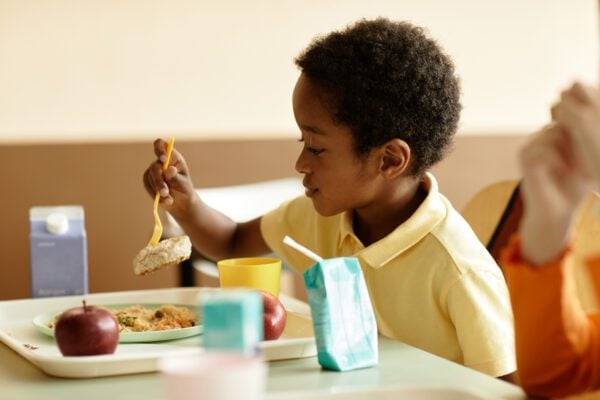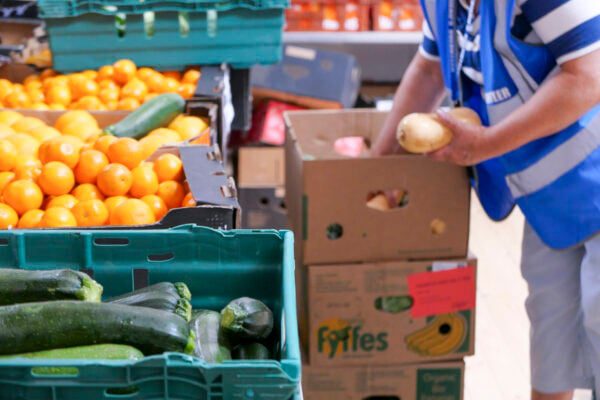Thousands of Indiana families will face greater challenges feeding their children this summer after the state opted out of a federal food assistance program known as Summer EBT or SUN Bucks. The decision, made quietly in February, could leave more than 669,000 Hoosier children — many of them Black and low-income — without the nutritional support they rely on during the school year.
The Summer EBT program provides $120 per child to eligible families during the summer break, helping them buy groceries to replace school breakfasts and lunches. The program was created by the U.S. Department of Agriculture (USDA) to address food insecurity when schools are closed.
Indiana officials missed the USDA’s Feb. 15 deadline to join the program and later confirmed they would not participate in 2025. No detailed explanation was provided, though the state has left the door open for future participation.
Advocates say the decision is a step backward for families struggling to make ends meet, especially given record inflation and rising food prices.
Community advocacy
“Where we are located on the far east side, it is the largest food desert in the state of Indiana … and it is one of the largest in the Midwest and it impacts 85,000 people on a daily basis,” said Kendra Nowell, CEO of the Community Alliance of the Far Eastside (CAFE).
Nowell said there is a need to access food year-round, but the need is heightened in the summer for children who may only receive a full meal at school. The loss of SUN Bucks, which could be used in various locations, can greatly impact families who would not have transportation to a designated meal site.
“For some people with limited access to transportation, they are feeding their families from what is available in the nearby gas station because that is what they can walk to,” Nowell said. “For people taking the bus with their children, walking blocks to and from the bus stop, they may only be able to manage carrying one to two bags of groceries per trip.”
The Fay Biccard Glick Center is located on Indy’s northwest side where Vice President of Youth Services Dyla Harris said there are not a lot of grocery stores and many families do not always have reliable transportation.
“We are surrounded with a large amount of apartments that are around us,” Harris said. “And so we’ll see individuals that will walk to access the grocery stores. Sometimes they catch a bus; it sends them downtown and then back up, which adds more time.”

A deeper impact on Black families
The impact of this decision is expected to hit hardest in Black and underserved communities, where food insecurity is more prevalent.
Data from Feeding America shows that Black Hoosier households experience food insecurity at nearly double the rate of white households. In cities like Indianapolis, Gary, and South Bend — where a significant portion of the population is African American — the program would have made a measurable difference.
“This is not just a missed policy opportunity. This is a moral failing,” said Robert Shegog, CEO & President of Recorder Media Group. “Black families in Indiana are already disproportionately impacted by poverty and structural inequality. Taking away access to food during the summer months deepens that gap.”
In Marion County alone, nearly 60,000 students qualify for free or reduced-price meals. Without SUN Bucks, families will have to absorb the financial strain of providing additional meals at home — many on already stretched budgets.
“With these food vouchers being taken away again, it’s taking away how people feed their children,” Nowell said. “Yes, these meal sites are still going on, but everyone can’t make it to a meal site. They’re not in walking distance to where every child lives that might be impacted from these vouchers being removed.”
Public health and educational consequences
Experts say the implications of Indiana’s decision extend beyond hunger. Children who experience food insecurity are more likely to suffer from chronic health issues, including obesity, diabetes and developmental delays. Hunger is also closely tied to learning loss and lower academic performance.
“This isn’t just about nutrition. It’s about health, dignity and long-term outcomes,” said Dr. Anita Brooks, a pediatrician on Indianapolis’s east side. “When we fail to nourish our children, we fail to prepare them for the future.”
“If we have a community or an area that’s dealing with food insecurity, then their children are impacted, then those children going into the education system is going to be impacted,” Harris said. “Then the teachers that are teaching the children will be impacted. It’s more than just this area over here.”
“We made a great step forward last summer by giving families the ability to purchase the food they need for their kids,” Kate Howe, executive director of the Indy Hunger Network, told the Indiana Capital Chronicle. “And it just feels like a giant leap backwards to take this program away, that the federal government is still operating, and we could opt into it.”
Indiana’s withdrawal leaves only the Summer Food Service Program (SFSP) in place, which provides meals at select physical sites such as parks, community centers, and libraries. But these locations are often out of reach for families in both rural and urban areas without transportation.
“In rural areas, there might be one meal site per county,” Howe said. “For many children, that’s just not a practical or safe option.”

Meeting families where they are
In addition to their summer programs and community experiences, CAFÉ offers a crisis food cooler, dry food pantry and monthly food distribution. They serve about 500-700 families per month, Nowell said, with a possibility of looking for more partners to expand their reach.
“Because we operate in a food desert on a daily basis anyway, we try to stay as prepared as possible,” Nowell said.
Several local nonprofits are also seeing uncertainty in their funding, but Harris said they are doing their best to meet families’ needs.
“I think that we’re trying to make sure we can stretch and last as long as possible,” Harris said. “In the summertime, we usually do Gleaners food boxes. Originally, we had planned on decreasing the size of those, but now, understanding that families may need it more, (we may be) using that program more so that we could use something else in the school year. We just try to be more strategic in how we proceed long term.”
She said it’s important to recognize that many families are in survival mode and it would be vital for policy and decision-makers to have empathy.
“I think if we could just have a little bit more understanding because when you’re trying to feed your children and you have to come up with creative ways to do that and look into those little eyes and see the hunger in them doing without, it does put a parent in a bad place,” Harris said.

What’s next?
The USDA’s Summer Meal Site Finder remains a resource for families looking for local meal options. Families can call 1-866-3-HUNGRY or text “FOOD” to 304-304 for more information. Access the map for the Indiana Department of Education Summer Food Service Program here.
Advocates are calling on Gov. Mike Braun and state lawmakers to reverse the decision for 2026 and to explore state-level funding alternatives in the interim.
“This is a solvable problem,” Howe said. “The infrastructure exists, the federal dollars are there — we just need the political will.”
How you can help
The “Indianapolis Recorder” urges local organizations, churches and community centers to expand support services for families during this critical time. If your organization is hosting a summer meal site or food pantry, please contact newsroom@indianapolisrecorder.com so we can help spread the word.






